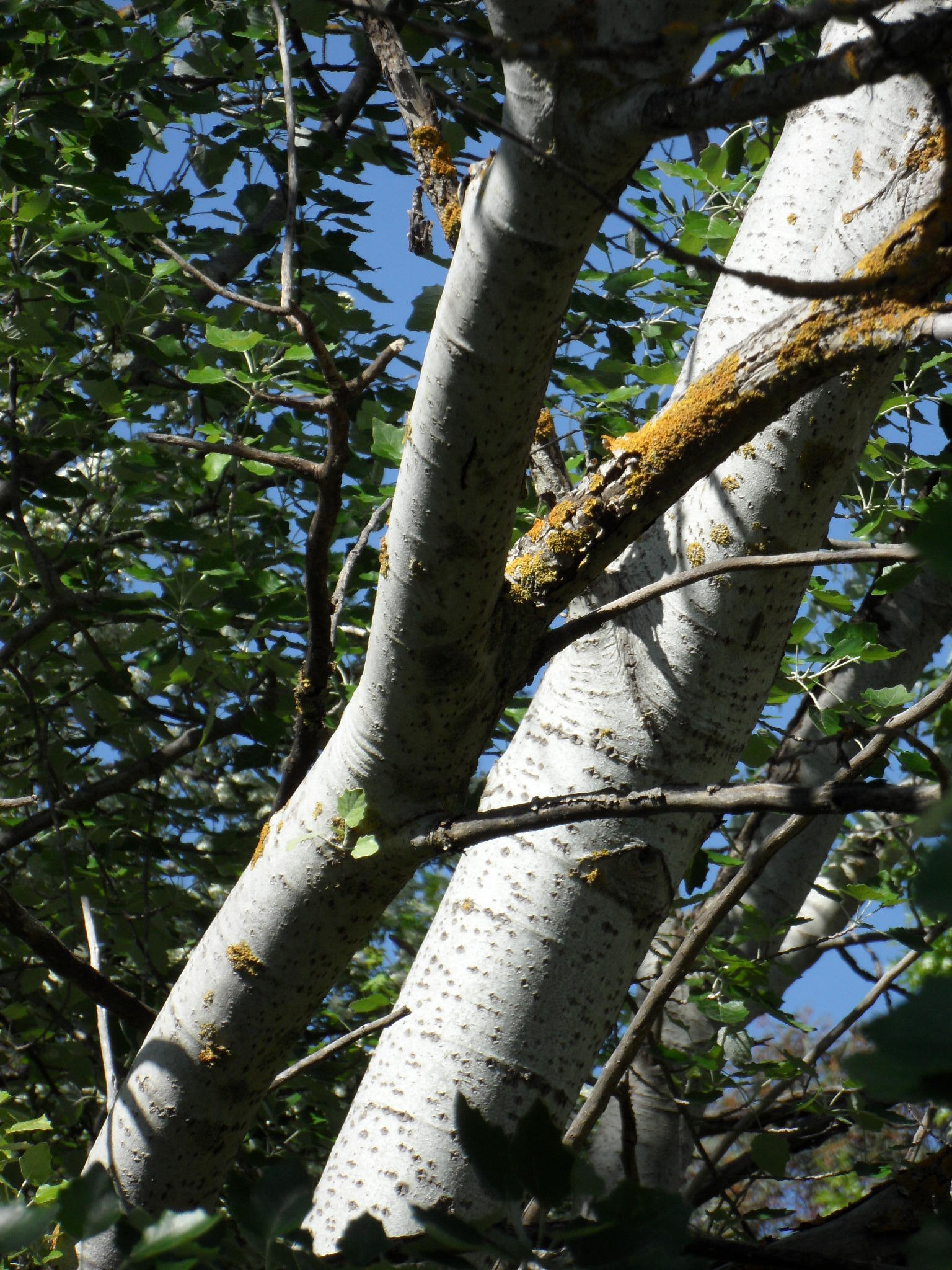
A large tree to 30 m or so tall and a girth up to 3-4 m. It is generally believed to be a hybrid between P. alba and P. tremula and has been cultivated in Europe for centuries. Leaves with rounded teeth, more or less round on short shoots, 2-5 cm long, much larger and ovate on long shoots, 6-10 cm long. Dark green above, grey beneath. Leaf stalks mostly 1-5 cm long.
Possibly of garden origin
There are rust-resistant clones of this hybrid available and an upright cultivar 'Tawer' is being trialled at the Yarralumla Nursery, Canberra.
Easily and widely confused with P. alba from which it differs in being a generally larger tree having leaves grey (not white) beneath, rapidly becoming hairless: they are rarely maple-like as in P. alba although new, low and suckering branches may have the characteristic maple-like leaves. The leaf-stalks and catkins are longer and the floral bracts are deeply cut, not toothed as in P. alba. Trees observed in Victoria are female.
Specimens VIC: Daylesford (Wombat Hill Botanical Gardens); Leongatha (Mossvale Park many trees around the periphery). TAS: Launceston (City Park).
Source: (1997). Salicaceae. In: . Horticultural Flora of South-eastern Australia. Volume 2. Flowering plants. Dicotyledons. Part 1. The identification of garden and cultivated plants. University of New South Wales Press.
